The Behemoth Called LinkedIn
Linkedin is an amazing tool that is used not merely by SMEs but by startups and one-man-shows as well. It was launched in 2003, and has been a home of the professional world ever since. It has about 670 million professionals using it, supports 24 languages including Arabic, making it one of the top go-to platforms in the business world.
Let’s dive into some much more spicy stats. Linkedin has about 310 million active users and about 90 million of these are senior level influencers. The best part? 63 million of these are in decision making positions.
It’s obvious that this professional media platform is widely popular and can have a huge impact in all areas of business.
Besides the enormous amount of users that LinkedIn has, there are other reasons that make it extremely appealing to people who need to generate new leads.
Is LinkedIn Good For Lead Generation?
Statistics from a 2018 post on LinkedIn show that around 80% of B2B leads come through LinkedIn, which was much higher compared to Twitter with 13% and Facebook with 7%.
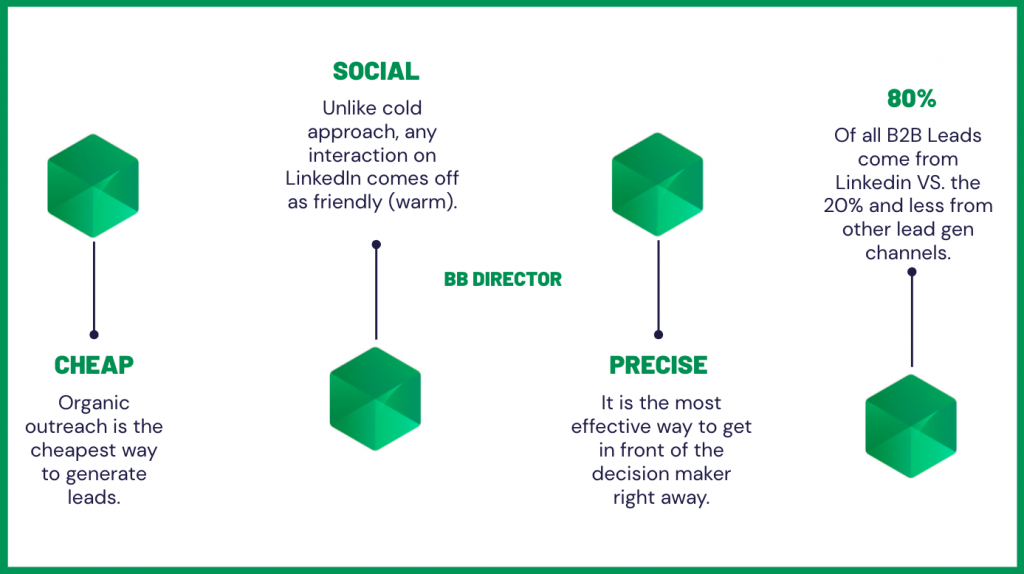
LinkedIn offers some amazing tools to generate leads. One of them, of course, is LinkedIn Sales Navigator. By using the LinkedIn Sales Navigator, your business can:
- Get 18% more leads.
- Make 33% larger deal sizes.
- Get an increase in win rate by 7%.
To be considered as one of the best lead generating platforms is no small feat, and LinkedIn Message Ads proves this every time. LinkedIn even provided their own estimations, according to which they deliver a 40% conversion rate!
These are the kind of figures that could capture the attention of almost any sales team trying to generate new leads. It’s almost like a never ending source of potential leads.
So, it’s time to show you how to get the most out of LinkedIn and what types of approaches you can use to get a piece of the huge gold mine called LinkedIn. We will start with the basics, such as profile revamping, and go into the more juicier things, such as outreach, qualification methods and more.
Here’s how we structured this article for you
- Defining and Finding Your Audience
- Optimizing Your Profile
- Crafting Your Offering & Setting Up The Basic Profile
- How To Connect With Your Prospects (Short Guide For People Who Don’t Have Time)
- The Channels And Processes To Generate Leads
- LinkedIn Lead Generation Campaigns
- Linkedin Manual Outreach
Defining and Finding Your Audience
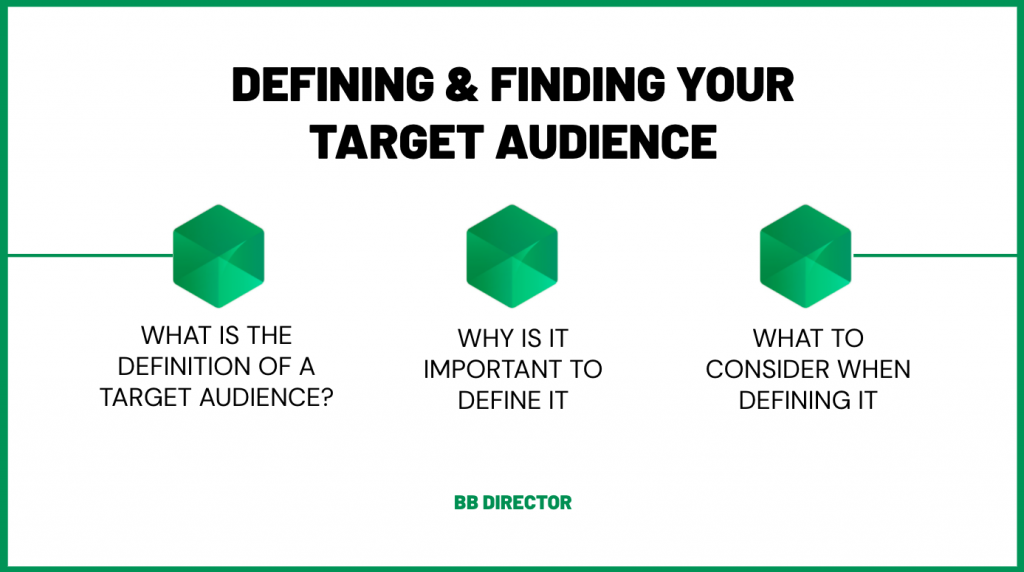
What Is A Target Audience?
A target audience is everyone that might be interested in your product/service. Unfortunately, you don’t have the luxury to reach out to everyone due to limiting factors, such as marketing budgets. Therefore, you first need to spend some time defining who you want to target primarily.
Besides, you shouldn’t reach out and sell to everyone because you’re not selling ice cream, you’re selling a product that solves a particular problem for a particular group of people. Let’s learn how to do some LinkedIn magic.
You can’t create a long-lasting brand and gain the loyalty of your current and future clients only by hard work and dedication.
A clever person solves a problem, a wise person avoids it.
Albert Einstein
You need to be that wise person! Let’s avoid the problem by defining your audience and finding it. This is your formula for success!
Why Is It Important To Define It?
Define Your Targeted Audience
Every successful brand is investing big money in defining their audience. That’s the first thing you should do. Observing from their perspective will help you identify their problems. Then turn their problems into opportunities by informing them about your offers and propositions. Information about your products and services is a must, too. Knowing your clients’ problems, you can create new offers which meet their needs.
Be Attentive To Your Products And Services
Identify who needs your products. Consider the demographics of people that will benefit from your unique propositions. This will pull out your audience and give you the answer of who and why is using your products and services.
Observe Your Current Clients And Depicture Your Targeted Audience
By observing your current clients you can find out which service or product is most wanted and needed. You can also identify their traits and patterns. It might be the case that who you think uses your services and products, doesn’t match the actual demographics of your clients.
Find Out Your Competitors’ Audience
Your competitors’ audience should be different from yours. By analyzing them you can identify the qualities of your audience and how you differ from your competitors. Think of a way you can use these differences to connect with your audience and form a deeper connection with them.
Find Out Your Clients
To find out their needs you can create a questionnaire. Also, a good old friendly conversation with your clients will create a strong bond and will help you identify who your clients are and what they need. If you don’t have information about your current customers and clients you can always ask.
Create One Or More Client Persona Profiles
You need to list all the demographics and psychographics in order to create an ideal client profile. y. Then, later on when you create your marketing plans, you can use this profile. This way you’ll always be addressing your targeted audience. Creating more than one customer persona profile will help you widen your audience.
Crucial Aspects To Consider When Building Your Ideal Audience Profile
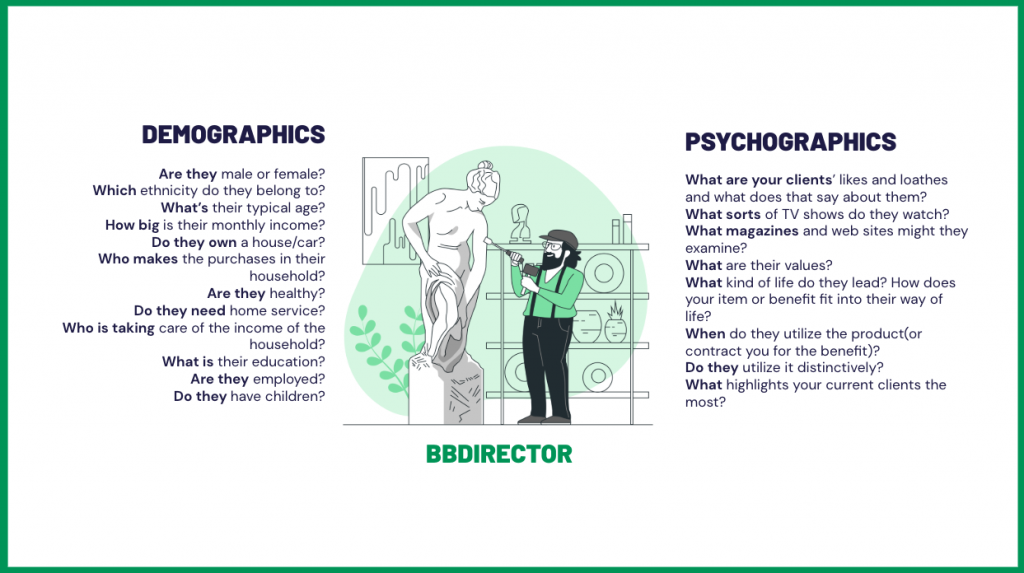
Demographics
- Are they male or female?
- Which ethnicity do they belong to?
- What’s their typical age?
- How big is their monthly income?
- Do they own a house/car?
- Who makes the purchases in their household?
- Are they healthy?
- Do they need home service?
- Who is taking care of the income of the household?
- What is their education?
- Are they employed?
- Do they have children?
- Do they live near your store?
- What kind of car do they drive (small, big, expensive, cheap etc.)
- Are they married?
Psychographics
In this exercise, you should also look at your product or service. These questions can help you better understand your target customer:
- What are your clients’ likes and loathes and what does that say about them?
- What sorts of TV shows do they watch?
- What magazines and web sites might they examine?
- What are their values?
- What kind of life do they lead?
- How does your item or benefit fit into their way of life?
- When do they utilize the product (or contract you for the benefit)?
- Do they utilize it distinctively?
- What highlights your current clients the most?
What Are Pain Points?
Pain points are the problems of our clients and business problems in general. As our clients differ in their character so do their problems. But, unfortunately not every client is aware that they have a problem. This makes marketing to these people very difficult, as they are not aware of their problems. You have to convince them they have a problem and that your product or service can help them resolve it.
Types Of Pain Points
Pain points are divided into four main categories:
Financial Pain Points: where your prospects are spending a lot of money on their current provider.
Productivity Pain Points: when the prospects are spending too much of their time on the provider and need to make a bigger income with lesser effort.
Process Pain Points: processing internal leads to sales representatives or nurturing lower priority leads.
Support Pain Points: you help your clients in a critical stage of their customer journey.
Position Your Company As A Potential Solution
To be able to position your company as a potential problem solver you might need to learn some general tips on how to become irreplaceable to your clients. Categorization of your clients’ main pain points gives you insight and makes you think about how to position yourself as someone who can provide potential solutions to their problems.
Becoming a trusted partner to your clients by showing them you have a variety of solutions to more than one of their problems will establish your company as a long-lasting trustworthy partner. Many customers’ problems are layered and complex. They might be having combined issues from several of the main categories.
You mustn’t have a narrow approach. Look at the problems holistically. This will enable you to identify your clients’ pain points.
Identifying Clients’ Pain Points
Conducting qualitative research is very important because your clients have highly subjective pain points. Many of our prospects are experiencing similar or same problems. But, even if the problem is the same or similar, the root of the problem can be completely different from one client to another.
Two primary sources that you can use to find out your future customers’ pain points are your current clients and your support and sales team. Through your current clients, you can identify the pain points by conducting focus groups, listening to your clients, doing social media research or keyword searching.
Your sales representatives can help you by giving you feedback on the customers’ complaints, desires and wishes. Regardless of this, you should distinguish customers’ pain points from your sales teams’ pain points.
Are You On The Same Page?
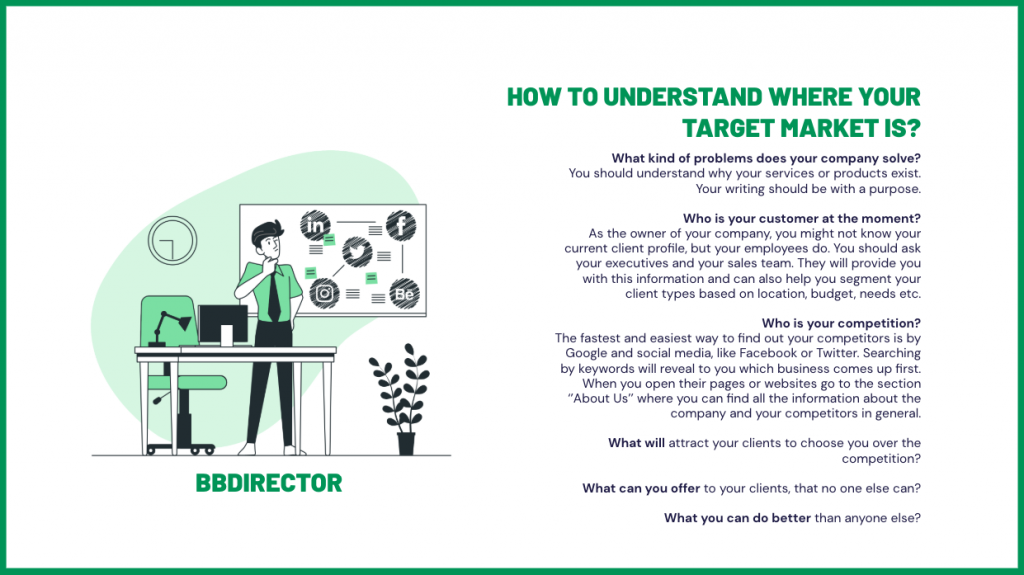
Naturally, most people think that good marketing content attracts new clients. Yes, that’s true! But, are you targeting the right audience for your brand? Which people are most likely to connect your content to your brand and which one of them will buy your product because of your content? Will every person who you contact go for your product just because you wrote compelling content?
Of course not!
Defining who your real audience is will help you focus on creating great content and also the right content. It is important to create content that establishes you as an authority in your industry, rather than creating content for its own sake.
How can you find your targeted audience? That’s exactly what we are going to talk about next.
How To Understand Where Your Target Market Is
You will understand where your target market is by asking yourself these questions:
- What kind of problems does your company solve?
You should understand why your services or products exist.
- Who is your customer at the moment?
As the owner of your company, you might not know your current client profile, but your employees do. You should ask your executives and your sales team. They will provide you with this information and can also help you segment your client types based on location, budget, needs etc.
- Who is your competition?
The fastest and easiest way to find out your competitors is by Google and social media, like Facebook or Twitter. Searching by keywords will reveal to you which business comes up first. When you open their pages or websites go to the section ‘’About Us’’ where you can find all the information about the company and your competitors in general.
- What will attract your clients to choose you over the competition?
- What can you offer to your clients, that no one else can?
- What you can do better than anyone else?
This is something that you will find out after you do a thorough research and get information about your competitors. This shouldn’t be a deep, detailed process. It is a simple starting point. It will also benefit you if you create your target audience definition which should connect these four things:
- Content mission
- Main audience
- Demographics
- Offered products or services
Let’s take a look at two additional methods which will help you understand your target audience.
First thing you should pay attention to is your product. Make sure you build features your customers will use. You need to make sure you truly understand their frustrations and problems and do your best in solving it.
When creating the content make sure you write it so that your audience can read it and find it useful to them. It’s not about getting page views, shares, clicks, likes etc. You should be the one who your readers can lean on.
So, what do we need to do to accomplish that? You need to understand your audience.
And how do you do that? By finding your content core – simple as that.
You can find your content core by understanding the difference between what you do and what you have to talk about. A beginner content marketer would probably make the mistake of talking about themselves and their product instead of talking about what their readers care about.
Yes, your product is important. Talking about it is important and helpful for your customers, but it will not help you around your blog audience. It will also not help you gain new clients who are probably interested in a greater variety of topics.
What you do should be at the core of your content. As you move forward from the content core and write about what your target audience wants to hear, you will improve the effectiveness of your article by focusing on their needs. At the same time, this method will help you keep the connection between your true topic and what you’re writing about.
Ok, now that we’ve cleared out how to write attractive and helpful content, the question remains: What does your audience care to read about?
Create Personas
To truly understand who your target audience is, you need to create a persona profile, continually use it, and keep understanding it consistently.
To identify your target audience you should find out what empowers them, their real motivations and curiosities. Visualization is the first step to tailor your content properly to them. Following this type of writing will always feel like you’re talking directly to your target audience.
Creating your readers’ persona profile you should cover these details:
Who, What, Where, Why.
When possible go deeper into details as details are important in order to cover every aspect. Details that matter include:
- Gender
- Personality
- Job Title
- Job Function
- Employer
- Location
- Income
- Family
- Pain Points
Key takeaways
We’ve learned how to create your reader persona profile which is the same as your targeted group of real clients who you will attract with your articles and they will one day enter your shop and become loyal customers.
- To gain them, you need to create your audience persona profile which will help you write the right content.
- Choose a photo from one of the image web sites of the person you’re writing for. Let it be your guide and serve you as a visualization of whom you’re addressing. Also write down the who, what, when, etc. of your target audience.
- When you achieve making your audience feel like you’re talking to them, then you will start converting readers into customers.
Crafting Your Offering &
Setting Up The Basic Profile
LinkedIn doesn’t have a very good reputation in optimization and client attraction. This is mainly because it is used by spammy salespeople and stuffy SEO students which were required to do profiles in their career skill classes. That’s why business people and marketers don’t put much faith in it and treat it like a platform for people’s online resume.
In reality, this is far from the truth.
Linkedin can be a powerful search engine that has the power to attract targeted, high-volume traffic to your profile, which will lead to professional relationships and new clients.
When it comes to LinkedIn client search, SEO is not the only thing you should focus on. Many marketers’ do this exact mistake.
In our experience, combining SEO with conversion copywriting, sales funneling and conversion optimization yields the best results. The benefits of doing this are profile aesthetics, creating a lead funnel, writing compelling content and more.
Optimizing Your Profile
People need around 8 seconds to decide on a content or a profile before they lose interest and move on to something else. It is a highly relevant point that if you don’t have a profile that tells potential leads how you solve problems, they will leave and you will lose your income.
To make sure this doesn’t happen here’s how you can create a sustainable profile:
- Banner picture
- Profile picture
- Headline
- ‘About’ section
The appearance of your profile is very important. Aside from the importance of your headline, summary, and experience section, another important thing is to make the best out of your profile picture and your cover photo as well.
Profile Photo
Your profile photo should be taken by a professional photographer. Someone who crafts his trade to help people visually attract what they desire. LinkedIn will suggest you to set your image on 60% of the frame. We disagree with this. You should have your freedom in choosing with whom you want to work and how you want to present yourself to them. Not every industry requires professional attire and corporate background. Some of us may work in casual surroundings.
Example of a good looking LinkedIn profile photo.

We’ve separated some crucial things about your profile photo that you should follow:
LinkedIn Profile Photo Rules
Close shot of your face.
High-quality image – clear, not pixelated.
Simple background.
Appropriate attire.
Smile!
One more thing… no selfies, please! If you want to present yourself as a professional, then be a professional.
Cover photo
You can simply create a cover photo with Canva or Photoshop, including copy appealing to your targeted audience. The cover photo section allows you to tell your visitors what you and your business are about.
Let’s elaborate on why the following is an example of a bad cover photo
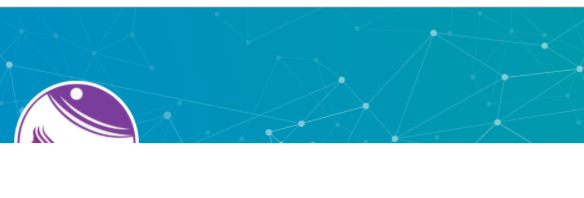
The cover photo of this profile is too broad to be able to show what this profile’s business is all about, and how this person can help his target audience. By optimizing the appearance of your profile, you give the best possible first impression on your potential connections.
Best way to do it:
LinkedIn Cover Photo Rules
Add a tagline telling profile visitors what you do and who you serve.
Add your website URL and social media handles.
Put an attractive backdrop image that draws in your target audience.
Include a call-to-action, or otherwise let users know how to contact you.
Let’s take this profile as an example of a correct LinkedIn profile from tip to toes:

How To Connect With Your Prospects
Some company owners just don’t have the time to launch a full blown LinkedIn outreach campaign, and that’s fine. So, if you see your self as one, the following short process will help you and you don’t need to read further. You can start by sending messages which are valuable and relevant to your future and present audience.
The process that yields the best results consists of two meaningful points.
- Send Connection Requests
- Drop A Message From Time to Time
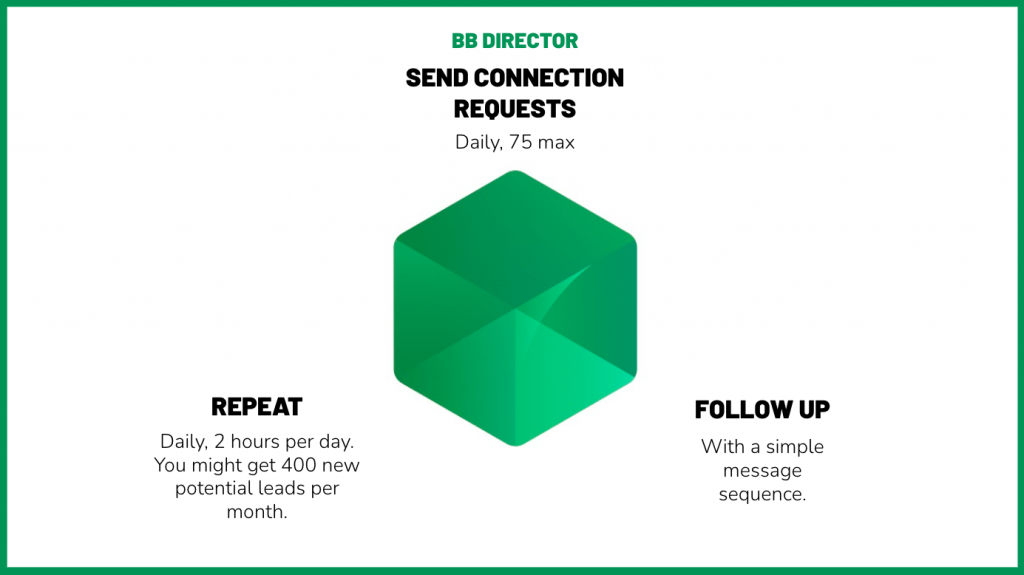
Step 1: Send Connection Requests
LinkedIn was created exactly for connecting with people and presenting your business to them. On LinkedIn, you can send up to 75 connections per day. Of course, there is also a catch, another limit is 750 outgoing connections at a time. The solution for this is that you can always remove some connections and replace them with others.
Go slowly when you ramp up. Start with 5 connections per day, then go to 10 the next day, 20 after that, etc. Till you reach 75. If at any point you think about using the automation tools for connecting…. Don’t do it! It is against the rules and it doesn’t do good in separating good leads from the bad ones.
Now let’s look at the actual process of sending connection requests.
- Try to make it simple and natural.
- Give a reason why you are reaching out. A reason could be a job title, common industry, or change in companies.
- You want the connection to be conversational.
- A short, sweet, and solid message with a maximum of 300 characters will do just fine.
Example Message 1 - Connection Request Message
Hi [First Name],
I saw you are focused on [industry] and I wanted to connect since we have a common interest in this field. Would be nice to hear what you’re working on at the moment.
Thanks,
[Your Name]
I help [industry] companies do [….]
Step 2: Drop Messages From Time To Time
If they accept your connection request, thank them and show them what you can offer. Now, if you did your homework creating your client profile persona, then you can write a hell of a message. Conversely, it can be stressful if you don’t know who your ideal client is or what they care about. The message can be written in many ways, but it shouldn’t contain more than 5 sentences.
The structure should look like this:
In the first two paragraphs, you should express your gratitude for connecting and you should lay a base with this person.
Next, you can tell a short story of your life experience and how you can help your new connection in their pursuit of love, liberty, life, or making money.
The last one should be a call to action. Be very careful not to sound like someone desperate to sell. Instead, strive for a two-way conversation.
Example Message 2
Hi [First Name],
Great to connect. My firm helps consultants establish themselves as an industry thought leaders through content marketing. Would you be interested in learning more?’
Thanks,
[Your Name]
This is just one of many ways you can drop your value message. Again, very important – keep it simple, respectful, short, and drop the ball in their court!
Example Message 3 - What To Do If There Is No Response?
If the prospect hasn’t replied to you in a week or two, you should engage in showing more credibility. In this message you can engage your prospects in two ways: presenting your clients’ testimonials or simply asking them if they want to see a case study.
Whatever you decide to go with – the correct way is to first ask them if they want to see more. Don’t assume they will want to. Usually, many of the marketers fool themselves this way and hit a wall.
Example Message 4 - Proficient Perseverance Meets Classy Goodbye
Hey [First Name],
Having reached out a couple of times over the last few weeks to discuss your [pain point/issue], I’m going to assume it’s not a good time to connect.
Would there be a better time for me to reach out later, or is there someone else I should be speaking to?
[Your Name]
In this sequence of 4 messages that we made, this is the final step. This message should be sent after 5 to 7 days from the last message. You can always experiment with more, but in our experience this way you can deliver value to your brand without the hassle and stress of constant messaging.
This message has two goals:
- Determine whether there is a better time to connect
- Show the prospect that you respect their time and space
Key takeaways
Each of us has a unique background and experience. Use that uniqueness and focus on a strategy which will enable you to connect with prospects you can easily conversate with. You can use LinkedIn and its optimization tools for this purpose.
Dream big, widen your perspective and get out of your prospecting routines by developing your own modern personalized client acquisition strategy.
To sum up what we’ve learned.
After you’ve finished setting up your LinkedIn profile, you’ll need to figure out who your target is going to be. Your sales team can build upon its pre-made target demographic by using LinkedIn’s filters which go into the smallest details of your lead preferences.
Keep in mind that LinkedIn offers plenty of filters and if you’re not certain that you can fill in some of them, then let us know, and we can share some ideas on how you can do that easily.
Now, if you do feel that you need a full blown outreach campaign, then stay a bit longer and read on. We will dissect few of the approaches that work best when it comes to Linkedin Outreach Campaigns.
The Channels And Processes To Generate Leads

But, you can also win the marketplace by reaching the right people. We can take an example from LinkedIn on how to connect with people and how the messages should be written. You can do this through:
- Lead Gen Campaigns
Lead generation campaigns in sales mean finding and contacting the potential customer. Depending on the company, a ‘lead’ can mean a contact already determined to become a client or any sales contact. Regardless of this, the definition remains the same. A lead is a potential future client.
- Manual Outreach
It’s the staple of linkedin lead generation and we’ve explained it in detail as to how you can implement it.
LinkedIn Lead Generation Campaign Setup & Goals
Using Lead Gen Forms you can use paid lead generation, but depending on your tactics, you can also use a non-paid option. You can even use a combination of both, based on what your goals are.
There are some fairly common details that you’ll need to figure out when deciding what approach to take. You’ll need to figure these out beforehand if you want your campaign to reach its full potential. We’ve singled out some of the most important ones below:
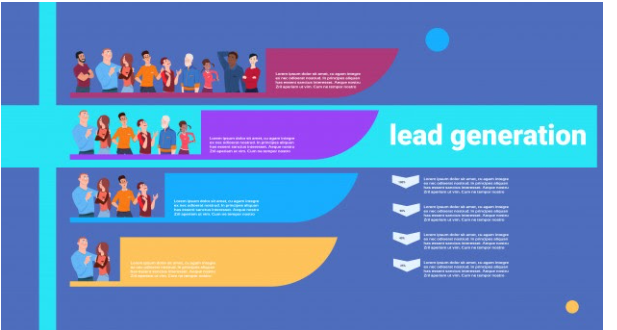
What Are Your Lead Gen Goals?
Your goal is to increase the number of new leads and the way to evaluate your progress is to pick some KPIs against which you can measure your success. For example, your aim could be to:
- Increase brand awareness
- Increase website visits, engagement, or content views
- Generate new leads, increase website conversions, attract job applicants
It’s apparent that the focus is on attracting more potential customers to your brand, but these campaigns usually go well with engagement and brand awareness efforts. The data from the second one can help you target your potential customers more precisely.
Another way to approach it is to have measurable objectives such as a targeted number of new leads, a certain conversion rate of your activity, or a specific ROI. You can use LinkedIn Gen Forms to help you start, once you have your goals set out. They have accurately pre-filled data, which allows respondents to easily reply with their details.
How Will Your Prospects Engage With You?
You can only go so far when using a well-executed campaign focused on targeting the right audience. All of the preparation there is, won’t be able to help you unless you know how you want your customers to interact with you once you’ve reached out to them. This factor needs to be considered as one of your top priorities when making your strategy.
You’ll want to build upon your previous research and planning by making engaging content, getting a devoted sales team, or anything that will make the prospect’s experience better, turning him into a lead that will go on to become a customer.

Answering questions like this before you start will make things easier:
- If a prospect wants to set up a call with you, do you have a qualified spokesperson that can turn that lead into a client?
- What is the most important info you’ll need to pass on?
- If your client wants a demonstration of your products and services, how long will this take? And what kind of access will they have?
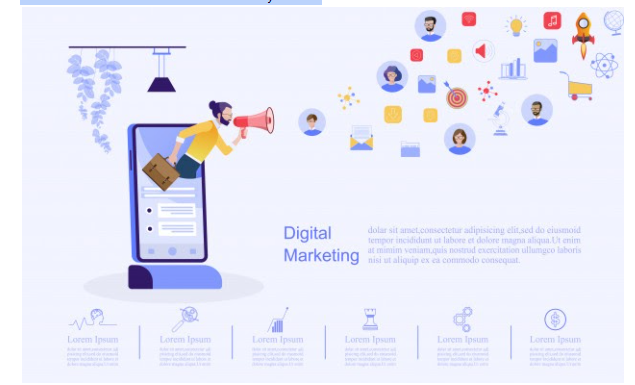
How Does It Fit Your Sales Funnel?
The LinkedIn platform is not one where you can sell your goods. It’s a platform for connecting and building up relationships with your prospects. Instead of doing activities that will overflow your prospects with spam and sales pitches, create a trustful bond before going through the usual sales funnel.
Once you’ve built a good and solid relationship with your connections and you’ve made relevant content, you can use Linkedin and put new prospects and leads in the sales funnel.

What Timelines Are You Working On?
It will take time until your hard work pays off. Expanding your business on Linkedin means creating a strategy to build up strong and reliable friendly connections.
Take your time in creating something valuable. Because the valuable things will sell themselves and people will notice that.
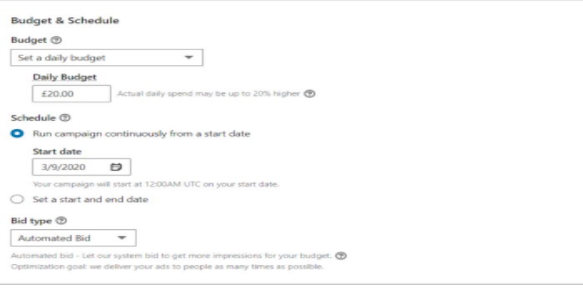
The length of your activity can be determined by your total budget, your daily budget, or your overall run time. Data from LinkedIn’s Lead Gen can be downloaded or imported to your CRM since the platform only allows access to your data for up to 90 days. That’s why you should remember to download your data regularly.
Lead Generation Campaigns Outreach Process
Now let’s dive deeper into the details of how to start your campaign. Here are the most important elements you need to know.
Connection Requests
To connect with your new leads there are two ways. You can do it through the automated process or manually. A connection request is a first and most important message. The value of this message is that it is the first impression you leave on your prospects.
Gratitude For The Connection
If the first message served as a success to connect, then you should write the second one hour after they replied. You shouldn’t use sales slang here. Instead, explain to them how you can help them and make sure you put a question related to what you’re offering.
Starting A Conversation
A couple of days after your last message it’s time to reconnect again with them. Send them an offer of great value. Something like a demo of your app, an article about their field of work, or anything useful and engaging.
The LinkedIn picture below represents sponsored InMail starting a conversation.
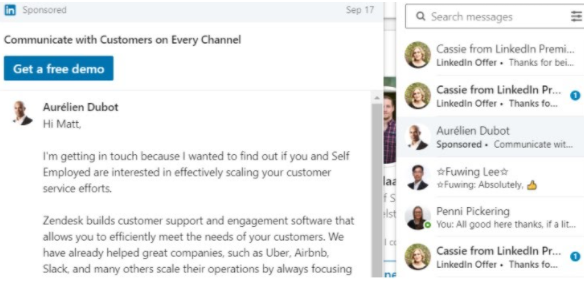
If you explain to them without being intrusive or spammy how they can benefit from your connection they will probably accept to communicate with you. Then you can send them a tracking link.
Manual Outreach
LinkedIn Manual Outreach - Who Does It Work For?
Before we go into the essentials, let’s take a look at what kind of business is more likely to succeed when it comes to LinkedIn.
How you present yourself can make a huge difference between a successful campaign and one that comes up flat.
Positioning Is Everything
Position your company as a potential solution.
To be able to position your company as a potential problem solver you might need to learn some general tips on how to become irreplaceable to your clients. Seeing the categorization of the main pain points gives you insight and makes you think about how to position yourself as someone who can give them potential solutions to their problems.

‘’Good service, happy client’’ – they say!
Becoming a trusted partner to your clients by showing them you have a variety of solutions to more than one of their problems will establish your company as a long-lasting trustworthy partner. Many customers’ problems are layered and complex. They might be having combined issues from several of the main categories.
You mustn’t have a narrow approach. Look at the problems holistically. This will show you how to identify your clients’ pain points.
There is always a different approach between industries. But, what we’ve found out is that we’ve been able to produce solid results for specific groups of clients. Those who had well-defined value propositions and clear ideas who they wanted to target had good results.
Consistency of clear targeting means identifying who benefits the most of your service and how powerful they are in decision making. Here, things like industry, company size, title, etc. are important.
Purpose of The Manual Outreach
To connect with your ideal audience, initiate a conversation and as soon as anyone gets back with anything positive such as:
- I’d like to learn more
- I’d like to get on a call
- Send more info
Or anything along those lines, to book a call with them.
For this purpose, we use the clients’ LinkedIn profile and Mailshake to send our campaigns.
The Manual Outreach Process
The following steps comprise the full process of how you should do it (a TL;DR version):
Step 1: Find the ideal client audience
First things first, you need to know who you’re targeting. Have you built out a detailed outreach persona containing, the title of the person you’re reaching out to, company size, industry, seniority etc? You must know these things before reaching out at all. Fill this questionnaire out if you want to specifically know who your audience is on linkedin.
Step 2: Rework your profile and create the chain of messages
- The key part of the outreach is to make your profile aligned with what the potential clients are looking for.
- Create a chain of short messages that will be sent during the outreach campaign through LinkedIn and email.
Step 3: Develop a lead search list in Sales Navigator
- The most crucial part. If you don’t develop a solid, targeted list, the outreach is a failure.
- The list needs to be as close as possible to whom you want to target.
Step 4: Outreach
- Connect with 30-40 people every day from the lead list in sales navigator and send them the connection message.
- As soon as they connect with you, send them message number two.
- At the same time, mark them in the outreach sheet and add them to the drip campaign. Don't have an outreach sheet? Let us know and we can share ours with you.
Step 5: Managing, monitoring and adjustments
- During this phase, manage the overall communication with the potential leads.
- This involves sending out messages from the sequence of messages you've created.
- Responding to potential leads with templates (but adjusted in a way that they fit what the leads responded with so that the templates look authentic)
Developing The Right Targeting
After you answer the questions in the questionnaire, you can build the Sales Navigator list according to the answers. Every answers, fills in a specific data point in Sales Navigator.
It’s of crucial importance to completely match
the target request from the client
with the targeting in Sales Navigator,
otherwise the outreach is useless.
The Outreach Sheet & The Report
You’ll also need a very tightly run ship when it comes to outreach – one that includes an outreach sheet which The outreach sheet has a purpose to provide analytical data so that we know if the campaign is successful or not. It represents a database of all our connections made during the outreach process.
Messaging
The process is simple.
- First, you add people on LinkedIn.
- When they get back to your message, you send them a message, and at the same time, you add them in an email sending software such as Mailshake or Gmass.
The idea is to get your potential clients on the call if they’re qualified.
As we mentioned before, the content of the message varies depending on the type of targeting.
Adding People & Writing The Perfect Connection Message
The catch is to connect with 30-60 people per day. And this should become a consistent daily process. A perfect connection request should look like this:
Hey [First Name],
I’m looking to expand my network of individuals in the [industry] field. Would you be interested to connect?
Thanks
Your name
{One sentence pitch where you tell them what you do.}
Pitching People
Structure of the pitching process:
- Open up your inbox
- Send each new connection a welcoming message
- Archive them
- Add them to the outreach sheet
- Finally, add them to GMass/Mailshake and schedule a campaign
Example of a Simple Pitch Message
Hey [First Name],
Thanks for connecting!
I hope everything is going great! Quick question, do you have a plan to get a consistent flow of leads looking for [your] services?
If I generate your inquiries in return for a small fee, would you be interested? I’m currently looking for consultants that I can generate business for.
Let me know.
[Your Name]
By the way, I hope you do not mind but I have sent you an email as I know a lot of people do not check their messages on LinkedIn 🙂
Framing Tips On Crafting The Best Messages
Framing – the art of making your product necessary. Popularized and perfected by Oren Klaff, a master of pitching in today’s world.
FRAME 1: THE TIME FRAME
When you pitch for new business, every minute matters. This doesn’t mean you should go fast – because moving too fast is needy (and neediness kills deals). What you must be able to do is pitch your product… in the correct time frame.
Moving too fast is needy, and neediness kills deals.
Here’s a timeframe cheat sheet.
- Cold lead – you must pitch the value within 6 minutes
- Warm lead – get to the value and offer in 8 minutes
- Hot lead – nail the value and offer in 12 minutes (spend the rest of the time closing)
- The Closing Call – be efficient here and wrap it up in 30 min., not longer!
If you need help refining your “value pitch”
FRAME 2: THE RESULTS
Your product must be framed as immediately functional and you must show that you solve hard problems.
People aren’t looking to “buy” your service (or your product, or your program). They’re just trying to solve their difficult problems. When they have “easy problems”, they will just solve those on their own.
Your customers have goals, plans and objectives. Help them hit their numbers faster and with more certainty … and you’ll close the deal.
FRAME 3: THE COST REDUCTION
At this point in time, if you’re faster, cheaper and more efficient than the Big Guys in your industry, you can be winning millions in new business. This is the easiest pitch in the world, takes 6 minutes. One of my companies does this pitch with a 2-page slide deck:
Slide 1: We are faster, easier, cheaper, and less frustrating.
Slide 2: Here’s how easy it is for you to switch to us.
FRAME 4: THE PERFORMANCE METRIC
A “Performance Metric” or whatever fancy Silicon Valley name you want to call it, is just a way for the client to measure your performance. This is among the most powerful and under-utilized forces in closing new business. Your target prospect needs the confidence that he will be able to measure your performance against your promises. If he feels he can measure you, it will create certainty in his mind, and certainty closes deals.
What Happens When They Express Interest?

Arranging Meetings
Anyone interested:
- You should schedule a meeting for the next day or two days max
- If they accept the timing then just go into your calendar, schedule a meeting between you and them, and write down the email
- After they do accept timing, add them to your CRM and create a new deal.
- Before they accept timing, set a task to follow up with them in 7 days.
- People that accepted a meeting need to have a reminder email sent two days before the meeting
- ALWAYS ask for a WhatsApp number to communicate.
Scheduling Calls Templates
First example message:
If they’re interested and ask questions about your product, go for this pitch:
Hey [First Name],
Thanks for getting back to me.
[if they had a question about the program, answer here but vaguely – nothing specific. Also NEVER SHARE THE PRICING HERE]
The best way to learn about the program is through a quick call.
How is your schedule on [next day] or [the day after] around [specific time]
Alternatively, you can schedule a meeting here:
Thanks,
[Your Name]
Second example message:
If they ask you to call them or contact them, go for this pitch:
Hey [First Name],
Thanks for getting back to me.
I’d be free any time between [particular time span]. What’s best for you?
Alternatively, you can schedule a meeting here:
Thanks,
[Your Name]
Tips To Use When Doing The Call
On The Call
- Sell like a doctor (first, diagnose)
- Talk about how this would change their lives for the better

Here are some questions you can use in different situations during the call.
You can use some of the following questions to diagnose their needs.
- How can I help you?
- What more can you tell me about that?
- Why do you believe you’re experiencing this?
- How long has this been going on?
- What are the reasons you haven’t achieved this yet?
- What has prompted you to look at this now?
- Why is this important for you to solve?
- How important is it for you to solve this on a scale of 1-10?
After you bring the problem in front of them in full force, show them the solution.
- Ask them where they see themselves in 12 months
- What should happen for them to be happy with the results
- Then help them paint a picture of how this place would feel
- Create a system based on their answers.
Find out if they like your plan by showing them a small segment of it and be sure of their serious intentions regarding the payment. Use sentences like this:
- Before we move forward, I’d like to find out if there’s any concern or question you have that I haven’t covered?
- Other than money is there any other reason why you wouldn’t move forward with this?
Setting up mandatory fees here is important because there is a high chance of closing the deal at this point.
- As I mentioned, there’s a 500 USD fee, but the people who make the decisions quickly become my best clients. This is because they are decisive. So if we can get this sorted out on this call and get the scope signed, I will waive the fee for you. How does this sound?
LinkedIn Outreach Live Scenario
Here’s how we do it. This is an actual over the shoulder written scenario.
First up is connecting with people.
- When you go to Sales Navigator, open the appropriate lead list
- Saved searches are on the right upper corner below your profile picture
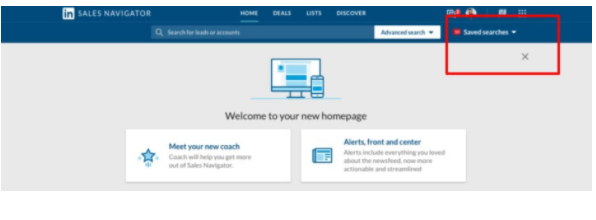
3. Start connecting with people.
Take into consideration that sometimes Sales Navigator will give you incompatible leads. That’s why we check each lead.
If you’re not sure whether the lead is in the specified industry, ask someone to double-check. You need people currently working in the company, not a former employee.
After you connect with the leads for the day, you need to pitch them.
1. Select the first message of the sequence and send it to each connection in the inbox. Always be careful and change the name.
2. Afterward, take their info and record it in the outreach tracking sheet. This is what you need to save:
- Name
- Title
- Company
- Additional Info You Need
3. Then we archive the lead conversation, to avoid inbox overflow.
After we pitch the leads on LinkedIn we also put them in the Mailshake campaign so that Mailshake will send them a sequence of emails.
The easiest way to put the leads in Mailshake is to just copy the lead’s name and email in a new tab, download the tab as a new CVS file, and then upload to the Mailshake campaign.
After they’re pitched from both LinkedIn and Mailshake we will be receiving feedback from them.
- Positive and negative responses need to be recorded in the outreach tracking sheet so that we know how the campaign is going
- Positive responses – we need to notify the client about them
- Negative responses – just put them in the archive
- If you’re not sure what the response is, ask us.
Sometimes we need to reply to the messages because they are not completely qualified yet.
- We have a template for that.
- It requires you to answer the concern that the lead will present.
Use the template but change it accordingly
If you’re not sure what to say, ask us.
Key takeaways
Your main purpose of using LinkedIn is to get sales. To be sure of your success, you should avoid aggressive tactics and spam content. Here is some advice you should keep in mind.
- Try not to use jargon or extensively technical language.
- Keep the conversation tone friendly, sincere, and without any pressure.
- Try to avoid yes or no questions when talking about arranging a meeting or a call
- Send your messages after a while so that it doesn’t seem like you’re spamming them
- Try not to send unrequested links or content. Respect your leads’ opinion if they say they’re not interested.
Other LinkedIn Lead Generation Strategies
LinkedIn has a few tools that can help your sales team connect with hot new leads, without it being overly intrusive for them. They can be used accordingly, depending on the approach you want to take.

Ads
The sponsored content on LinkedIn allows you to promote your company’s progress on the platform. There are a few ways to go about this:
- In the newsfeed.
These ads easily blend into the usual newsfeed content, which makes your brand noticeable on desktop, mobile, or tablet.
- In their DMs.
These kinds of messages often have a higher conversion rate compared to emails. Through LinkedIn’s Sponsored InMail you can send highly personalized ads into the inbox of potential leads.
- On desktop.
Another great way to go about this is to use LinkedIn’s pay-per-click ads which appear throughout the platform. There are a lot of things you can ad, like headlines, text, and even small images specifically targeting your potential leads.
Engage With Groups
It takes a lot of time to look for individual leads even if the process is automated. One great way to get over this is to look for groups of people in LinkedIn’s Groups Function. These are expert groups that are concerned with specific niches.

Having in mind that there are more than 2 million groups on the platform, there’s a great chance that you’ll be able to find the one that fits your demographic perfectly.
You’ll want to start attracting leads by being active and contributing positively. Therefore, you’ll need to join in on the discussion, instead of just posting spam content into these groups. You can’t find a group that matches your niche? There’s always the option of creating one yourself, which is also a great way to have leads come to you.
How to Engage With LinkedIn Groups?
Create Content
Creating content is crucial! A great way to leave a mark on your brand is to create relevant articles, videos, and all sorts of content that can be of value to your leads. This is supported by the fact that LinkedIn is used as a channel for distributing content by 94% of B2B marketers.
What you can do to show your leads that they can trust you and that you have great expertise in your field, is to regularly make engaging content that’s related to your industry.
Live Videos
LinkedIn Live video streaming gives you the chance to broadcast live, which has made it very popular. It can be used to present a product, showcase an achievement, or even conduct an interview. This can be very effective, regardless of how you choose to use it.
LinkedIn estimates that live broadcasts get 7x more reactions and 24x more comments than native videos. They’re an excellent way of reaching out to and connecting with new leads.
Find out more about how to go live on LinkedIn in our dedicated guide.
LinkedIn Lead Generation FAQs
So, we’ve gone through all the basics of how to get leads on LinkedIn. Even though the process is pretty detailed, there are a lot of tools that can make it simpler and easier.
Below you can see the answers to some of the most common questions concerning lead generation on LinkedIn:
This is a common misunderstanding when it comes to LinkedIn. A lot of people presume that you can only target 1st or 2nd-degree connections. By making marketing efforts tailored for a particular niche, you’ll be able to reach a larger number of people, even without being directly connected to them.
Read our article on how to connect with someone on LinkedIn who’s not in your network to learn more.
There are a lot of different metrics you can pick to measure. These metrics can be things such as the quality of Sales Qualified Leads (SQLs) and the cost per lead. You can also measure the conversion from SQLs to opportunity and cost per inquiry.
It depends on your business and sector, but usually, companies tend to reduce their expenses when it comes to lead generation. So there’s no concrete answer to this question. You can check the Integrated Marketing Association for an average comparison.
BONUS:
Outreach Tools + More Sample Messages
Sample LinkedIn Outreach Messages
These messages change for each client including ourselves.
LinkedIn Connection Message
Hey [First Name],
I’m looking to expand my network of individuals in the [particular field/industry]. Would you be open to connecting?
LinkedIn Welcome Message
Hey [First Name],
Thanks for connecting!
I hope everything is going great! Quick question, do you have a plan to get a consistent flow of leads looking for [particular product/service]?
If I generate your inquiries in return for a small fee, would you be interested? I’m currently looking for [particular vocation] that I can generate business for.
Let me know.
[Your Name]
By the way, I hope you do not mind but I have sent you an email as I know a lot of people do not check their messages on LinkedIn 🙂
Alternative
If the lead is someone professional in one of these areas: Coach, Mentor/Speaker, then use the following pitch – because it’s specific for making presentations.
Hey [First Name],
Thanks for connecting,
The reason I reached out is that I wanted to ask you: How do you feel about freeing more time to grow your business?
If I do that, by helping you minimize the time spent on [insert the service that you offer], in return for a small fee, would you be interested?
Let me know and I can send some more info about how I’ve helped similar businesses create [particular product/service] that can sell and win your audiences.
By the way, I sent you an email as well because sometimes people don’t check their LinkedIn messages 🙂
Scheduling Meetings Templates
If they’re interested and ask questions about the program, go for this pitch
Hey [First Name],
Thanks for getting back to me.
[If they had a question about the program, answer here but vaguely nothing specific. Also NEVER SHARE THE PRICING THERE]
The best way to learn about the program is through a quick call.
How is your schedule around [next day] or [the day after] around [specific time
Alternatively, you can schedule a meeting here: https://calendly.com/
Thanks,
[Your Name]
If they ask you to call them or contact them, go for this pitch:
Hey [First Name],
Thanks for getting back to me.
I’d be free any time between 4 pm and 8 pm [UAE/UK/US etc.] time. What’s best for you?
Alternatively, you can schedule a meeting here: https://calendly.com/
Thanks,
[Your Name]
Gmass/Mailshake Communication
First email message
Hey [First Name],
We recently connected on LinkedIn. Appreciate it 🙂
The reason I emailed you is that some people rarely check Linkedin. So I wanted to ask you what’s your plan on getting more clients in the next 6 months?
If I help you get more clients, in return for a small fee, would you be interested? I’m looking for companies that I can help improve they’re [insert the service that you offer] and increase their chances of landing new clients.
Sincerely,
First Follow Up
Hey [First Name],
Checking to see if you got my previous message about helping you get more clients.
Quick question: How many qualified leads are you able to generate now?
Just reply to this message to let me know if you would like to have a quick chat to talk about it.
Sincerely,
[Your Name]
Second Follow Up
Hey [First Name],
Just checking to see if you got my last message, I haven’t heard from you.
If you want some more info on how I can help you get more clients, just reply to this email and I’ll send you the details.
Just reply to this message to let me know if you would like to have a quick chat to talk about it.
Last Message
I haven’t heard from you so I’ll assume you’re not interested.
If you are and have just been too busy to respond…reply to this message now.
If not… best of luck for the future.
The Value Offering Messaging
LinkedIn Connection Message
Hey [First Name],
I love connecting with people in [particular field], would you be open to connecting?
Thanks,
[Your Name]
I help [particular field/brand/vocation] easily get into the [particular market].
LinkedIn First Message
Hey [First Name],
Thanks for connecting, I appreciate it!
I see you’re in the [particular industry]. Curious, what are your thoughts on the [particular relevant market]? The reason I ask is that it has been exploding in sales for the past year, particularly in your niche and I wanted to see how someone in your position viewed this market.
Would love to get your opinion on this,
Thanks,
[Your Name]
LinkedIn Article Message
Hey [First Name],
BTW here’s an interesting article – it’s about [insert article description making it relevant and worthwhile to them – example: it’s about the potential growth that brands like yours could sustain in the Chinese e-commerce market]. Feel free to check it out if you have a few minutes.
Check it out here: [url]
Thanks,
[Your Name]
LinkedIn Feedback Message
Hey [First Name],
Thanks for getting back to me last time. I prepared a very in-depth guide about the [particular field/market] and I wanted to ask for a favor. Would you be able to quickly go through it and let me know what your opinion is about it?
I’d appreciate your feedback!
Here’s the link: [url]
Thanks,
[Your Name]
LinkedIn Pitch Message
Hey [First Name],
What are your thoughts on entering the 1 [billion/trillion] $ [particular market] and gaining easy access to 415 million [particular target audience]?
Similar products in your industry are doing extremely well, so would you be interested to find out how yours would do in the [particular market]?
We are looking for [brands/companies] like yours, with unique and interesting [products/services] that are in high demand in the [particular market].
Let me know.
[Your Name]
Visualized Messaging Sequence
Sometimes it’s easier to follow messages if they are created in a mind map or process tool. We use sheets because it’s the most basic and easiest way to create them.
If you need help creating one, let us know.
Now that we’ve finished this massive guide, its time for our service announcement!
Jokes aside, if you are looking for help getting more leads through linkedin, check our service here.
If you’re looking for someone to help you with an urgent task, check our exec VA service here.
Now that we’ve finished this massive guide, its time for our service announcement!
Jokes aside, if you are looking for help getting more leads through linkedin, check our service here.
If you’re looking for someone to help you with an urgent task, check our exec VA service here.